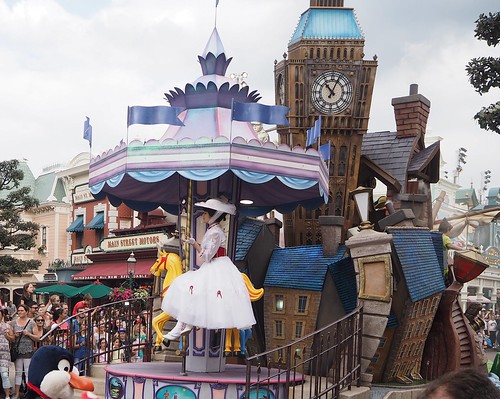Mary Poppins film rating raised from U to PG over ‘discriminatory language’
Mary Poppins #MaryPoppins

Mary Poppins has had its rating raised from U to PG over “discriminatory language” – 60 years after the film’s release.
The British Board of Film Classification (BBFC) has now deemed parts of the 1964 classic about a magical nanny unsuitable for children to watch alone.
The rating has been upgraded from U, meaning it is suitable for all, to Parental Guidance (PG) because of the use of the derogatory term “Hottentot”.
First coined in the late 17th century to refer to the Khoekhoe, a group of people who were among the first inhabitants of southern Africa, the term is now considered to be racially offensive.
Admiral Boom, a neighbour of the Banks family, says “Hottentots” twice in the film – first about people offscreen and then when talking about the two children whose faces are blackened with soot.
A BBFC spokesman told the Daily Mail: “We understand from our racism and discrimination research … that a key concern for … parents is the potential to expose children to discriminatory language or behaviour which they may find distressing or repeat without realising the potential offence.”
The film, about two young children who get a magical nanny, has had its rating upgraded from U to PG – LANDMARK MEDIA/ALAMY
The live-action and animation film, starring Julie Andrews as the nanny who transforms the lives of two children who feel neglected by their parents, is being re-released in select UK cinemas next month to celebrate the film’s 60th anniversary.
Classifiers picked up on the dated and racially offensive term – historically used by Europeans to refer to the Khoekhoe but later used to refer to all black people – and deemed it necessary to reclassify.
“Content with immediate and clear condemnation is more likely to receive a lower rating,” the BBFC spokesman added.
It is understood that the reclassification only affects the cinema version of Mary Poppins, with home viewing still under the U rating.
The new PG rating means that “some scenes may be unsuitable for young children”, according to the guidelines.
While children of any age can still watch the film, the new rating means parents are now advised to consider whether the content could upset “younger, or more sensitive, children”.
It was reported that the BBFC looked at historical context when making the decision – the film is set in London in the early 20th century – but the fact the language is not condemned when used means it now exceeds guidelines for a U rating.
The 1979 film Star Trek: The Motion Picture was also upgraded from a U to a PG as a result of its “very mild language, mild violence and threat”.
When deciding on how to classify a film, the BBFC looks out for discriminatory language or behaviour that is “unlikely to be acceptable unless clearly disapproved of, or in an educational or historical context, or in a particularly dated work with no likely appeal to children”.
Broaden your horizons with award-winning British journalism. Try The Telegraph free for 3 months with unlimited access to our award-winning website, exclusive app, money-saving offers and more.